Published online at Louisville, Kentucky USA -
An independent, secular, contemporary journal of political and environmental issues dedicated to peaceful reduction of human impacts on Earth
Published online at Louisville, Kentucky USA -
An independent, secular, contemporary journal of political and environmental issues dedicated to peaceful reduction of human impacts on Earth

BadwaterJournal.com
WHAT UNSUSTAINABLE URBAN GROWTH LOOKS LIKE
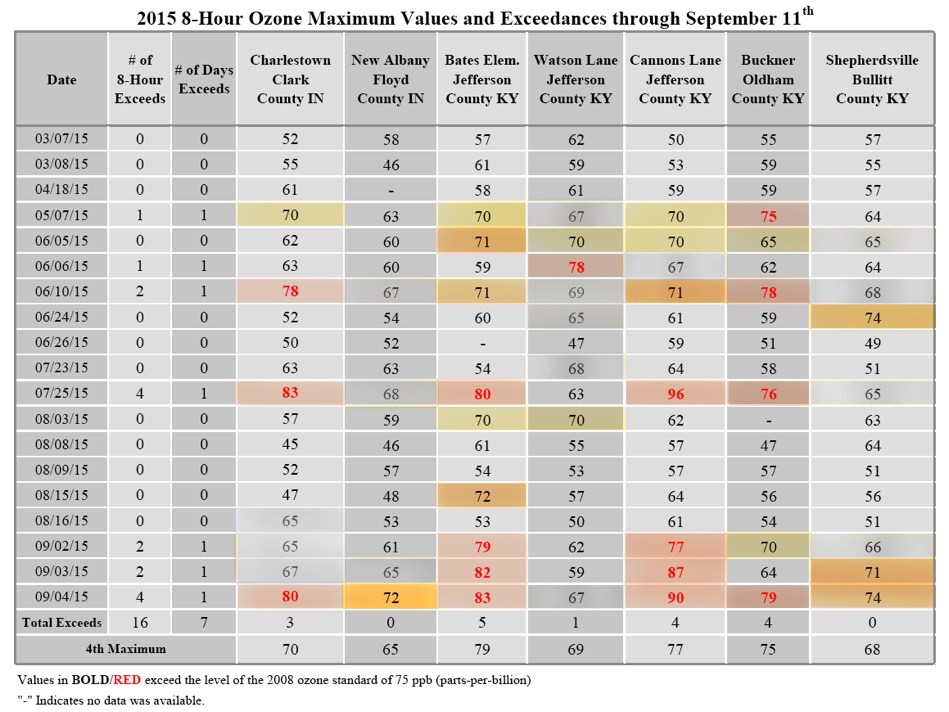

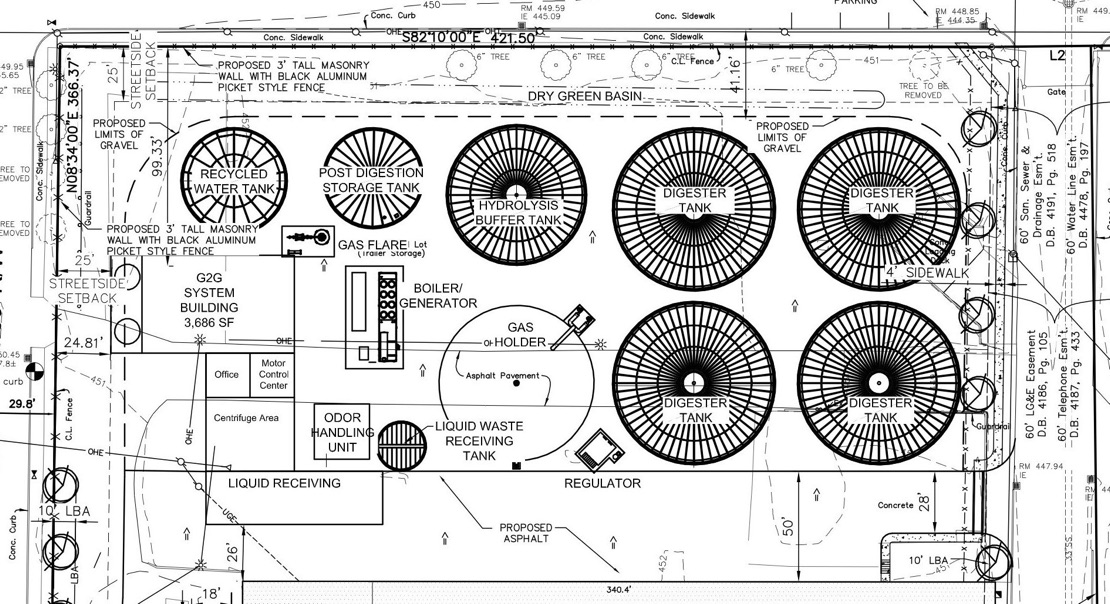


WHY is It called BadwaterJournal ?
This blog originally focused on water pollution caused by sewer overflows. See some related pages HERE and HERE
I used the simple language ‘bad water’ to dispense with the hyper-technical terms that scientists use to describe the characteristics of bad water, such as ‘total dissolved solids’ or ‘fecal coliform colonies per mili-liter’. The intent was to inform with photographs taken along the streams in Jefferson County Kentucky USA about the problems of sewer overflows caused by unchecked development and undercapacity infrastructure. Typical residents needed to know more about the local streams where children wade.
comments to:
Bud Hixson,
Badwater Journal
mail to:
1336 Hepburn Avenue
Louisville, KY 40204
Some pages have been put in storage
if you click on a link that doesn’t work
and you want to see the page
contact me at budhix@iglou.com

Children in bacteria laden
waters at Big Rock in
Cherokee Park
Louisville, KY


As of 2010:
• the annual economic cost of premature
deaths from air pollution across the
countries of the WHO European Region
stood at US$ 1.431 trillion; and
• the overall annual economic cost of
health impacts and mortality from
air pollution, including estimates for
morbidity costs, stood at US$ 1.575
trillion.
“The past few years have witnessed
substantial accumulation of new evidence
on the health effects of air pollution, on
the economic cost of these impacts,
and thus on the costs and benefits of
policy initiatives designed to combat air
pollution. As a result, it is now possible
to state – and important to communicate
– that, relative to many other known
environmental health risk factors, the
health impacts of air pollution are larger
than previously assumed. Moreover, this
physical toll imposes a greater economic
cost than previously assumed and,
consequently, the net economic benefit
to be gained by reducing this cost is far
greater than previously assumed.
Air pollution is a risk factor for several
causes of death, but cardiovascular and
cerebrovascular causes of death account
for the greater share of attributable
mortality: 80% in the case of ambient
air pollution (AAP) and 60% in the case
of household air pollution (HAP) (WHO,
2014b).
A publication by WHO1 in 2014 gives a
global estimate for 2012 of 3.7 million
premature deaths from AAP and 4.3
million premature deaths from HAP,
cumulating in 7 million premature deaths
from the joint effects of AAP and HAP
(WHO, 2014b).
Source: Metro Air Pollution Control District revised report 10/21/15
Shaded areas apply the new Ozone standard of 70 ppb.


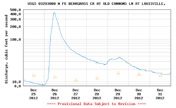
‘Infraculture’ © 1990 Bud Hixson
(4)
(4)
(1)
(4)
(4)
(2)
(1)
(3)
(3)
(6)
Methane digester air emissions not disclosed to residents or BOZA prior to hearing
Metro Air Pollution Control District is not requiring an air emissions permit application be filed prior to the Conditional Use Permit hearing at the Board of Zoning Adjustment now scheduled for Monday December 7 at 6 pm.
Subject Property: 821 S. 17TH STREET
Case Number: 15CUP1023
BOZA voters will thus approve the methane biodigester facility (likely) without understanding significant material facts about local health impacts from the process.
That could be viewed as arbitrary and capricious (maybe) by a reviewing court when the facts are significant and material to an informed decision--and where they were intentionally withheld. The materials so far produced for public review obscure or don’t report the real impacts of the methane digester facility. Local residents lack professional guidance from their agencies to help them weigh the pros and cons of the proposal.
What does APCD know?
The pre-hearing BOZA Staff review available for download from the Metro website claims there are no outstanding technical review issues--but it fails to detail any such issues that were resolved. BOZA staff informs us, Air Pollution Control District has given preliminary approval:
“The proposal has received preliminary approval from APCD and contains an odor handling unit on site as part of the overall system.”
Surely that bland assertion represents reams of technical review of potential air emissions at the facility--but none of the details have been released. When I contacted APCD they told me:
“Based on what we know, the developer will file a permit application once they have defined the final scope of the project. Until we get an application, we can’t determine what type of permit may be required or issued.”
“An applicant is not required to submit a permit application to the Air Pollution Control District in advance of a BOZA determination. If a member of BOZA or a concerned citizen has questions/concerns about the suitability of a facility, including its potential emissions, they can be raised as part of the zoning process and BOZA can consider that in coming to a final decision.”
Now the government on half baked information intends to push through an approval of a major methane digester plant in the same local urban area without a careful study of the consequences of a new local point source of tons of CO2.
How much bourbon-ozone contributes to Louisville’s asthma epidemic is not detailed in any report I’ve found. Metro champions ‘sustainability’ on the one hand--then obscures the contribution of the bourbon industry on the other.
Ozone levels are not homogenous but can have localized concentrations and scientists have attempted to depict plumes and map local extreme concentrations of gases. See the plume study graphic below.
The two processes of fermentation to alcohol followed by anaerobic digestion to methane have LOCAL IMPACTS to urban communities resulting in high gas concentrations locally. The ‘no net addition’ argument fails to discuss the fact that tons of grain harvested from crops over thousands of acres across the state are biochemically broken down in local production processes and release annual tons of gas from point sources into local air sheds with proximate impacts to residents.
How much and what result are questions that should be clearly answered and considered by BOZA decision makers as they weigh the economic advantage versus local health impacts.
The following numbers give some picture of the tons of crop products moved to the West End and the resulting ethanol fugitive emissions.
Including the other products distilled by Kentucky distillers, 12 to 12.5 million bushels of corn and 4 million bushels of other grains (primarily wheat, malted barley, and rye) are mashed and fermented each year.
56 pounds per shelled bushel of corn times 12.5 million bushels = 700 million pounds/2000 pounds per ton = 336,000 tons shelled corn used annually in distilling.
Move Louisville slide

So why do taxpayers pay Air Pollution Control District salaries if they don’t study the safety and emissions of a proposed site and communicate them to the public before giving a CUP preliminary approval?
How are citizens supposed to make meaningful comments at a BOZA hearing if the professionals we employ won’t share their thinking before the BOZA Board takes a vote ?
The materials disclosed in the BOZA meeting agenda package don’t include any review by APCD showing what emissions they anticipate and why they don’t think health impacts to neighbors are at issue. The public is kept in the dark about the tons of local emissions from this new source.
What are the emissions ?
At 17th and Maple in Louisville’s west end, tons of wet distillery mash solids that are the residue of whiskey production will be mixed with other waste and converted into methane gas and compost solids for land application.
The process will release concentrated CO2 gas in the local area that is a byproduct of anaerobic digesters. The LG&E pipeline will require high quality gas stripped of carbon dioxide and other contaminants before injection. Since the methane process produces 60% CH4 and 40% CO2, tons of CO2 will be released into the atmosphere at 17th and Maple. The site plan drawing shown below indicates that methane will be combusted on site to generate energy and heat to be used in the process. That combustion will produce CO2. (According to applicant LG&E gas will fuel generator 12-8)
This will locate a new plume of concentrated CO2 at 17th and Maple from the tons of organic material collected from across the state.
"The biogas generated and contained in the digesters is generally 60% methane and 40% carbon dioxide, and the biogas will contain small amounts of nitrogen and hydrogen sulfide. The biogas is removed from the digester tanks and the process first separates the carbon dioxide and returns it into the atmosphere. This is the same carbon dioxide that the organic material captured to grow so there is not a net addition of the carbon dioxide to the atmosphere.”
Thousands of acres of corn, rye and other crops from fields distributed across several states are harvested for use in manufacturing whiskey and other beverages at the Heaven Hill Plant on 17th Street.
The West End will indeed be a dumping ground for carbon dioxide gathered in plant material from across the state. Since Louisville has a heat island problem already from massive dumping of gases from many sectors into the urban airshed--its difficult to square this plan with the Mayor’s professed environmental commitment to cleaning up the air quality. It looks like a favor to major economic forces--Big Bourbon.
Big Bourbon
"In December of 2013, Louisville Mayor Greg Fischer created the Bourbon and Local Food Working Group (consisting of business executives, chefs, distillers, and tourism leaders) with a mission of harnessing the city’s Bourbon and food cultures together, enhancing them, and ultimately using the fused culture as an economic development tool.”
Metro Gov’t press release
In Jefferson County, major whiskey barrel warehouses like the ones at 15th and Breckinridge are storing the largest inventory of aging bourbon barrels in the states history-- more than 5.6 million barrels. At 53 gallons per barrel thats 296.8 million gallons. The emissions from the methane digester plant will be dumped into an airshed already full of ethanol emissions from bourbon barrel outgassing.
In a report available online, The Economic and Fiscal Impacts of the Distilling Industry in Kentucky prepared for the Kentucky Distillers Association by the Urban Studies Institute, University of Louisville, October 2014, the boom in bourbon production is detailed:
· Bourbon production has increased more than 170 percent since 1999 (485,020 barrels compared to 1,306,375 in 2014), with premium small batch and single barrel brands driving the Bourbon renaissance.
· At 1.3 million barrels, Bourbon production in 2014 reached its highest mark since 1970, and a third straight year with a million barrels born.
· Total Bourbon inventory topped 5.6 million barrels in 2014, the highest it’s been since 1975. That means there are one million more barrels of Bourbon aging in Kentucky than there are people (4.4 million) living in the Commonwealth.
Most of the 5.6 million barrels are less than 5 years old and are outgassing so called "angels share” fugitive ethanol emissions. ‘Master distillers’ lament that sometimes when they open an older whiskey barrel--theres nothing there--its all volatilized and passed through the oak barrels into the atmosphere. The 5.6 million barrels will outgas 44.5 million gallons to the local atmosphere. Thats a lot of food fto permit whiskey fungus to flourish.
See http://www3.epa.gov/ozonepollution/health.html
Ozone can:
•Make it more difficult to breathe deeply and vigorously.
•Cause shortness of breath and pain when taking a deep breath.
•Cause coughing and sore or scratchy throat.
•Inflame and damage the airways.
•Aggravate lung diseases such as asthma, emphysema, and chronic bronchitis.
•Increase the frequency of asthma attacks.
•Make the lungs more susceptible to infection.
•Continue to damage the lungs even when the symptoms have disappeared.
diesel Semi-truck
combustion emissions
combustion emissions
gas separation
CO2 release
methane fugitive emissions
wind rose from Louisville
airport
prevailing winds
from west and south
Louisville has serious health impacts due to high ground level ozone concentrations. APCD, serving its industrial masters and auto manufacturing interests, submitted a plan to reduce ozone emissions and avoid more strict regulation July 2013 called the Louisville Path Forward. In it, APCD stated:
"Interestingly, a large number of ethanol fugitive emissions originate from three bourbon aging facilities in the county. LMAPCD has no jurisdiction over them because those emissions do not count toward the 100 tpy applicability threshold for the Clean Air Act Part 70 operating permit program.”
There are several similar DAQ permitted facilities in the ozone maintenance area that contribute nearly that amount of fugitive emissions. Like LMAPCD, DAQ has no authority to include bourbon aging fugitive emissions in the facilities’ inventories. Combining both counties’ fugitive emissions is equivalent to approximately 30% of the all of the VOC emissions inventory in Jefferson County. Unfortunately, these emissions contribute to the area’s VOC emission total and to ozone formation."
Jefferson County VOC (fugitive distillery) emissions in 2008 were 3,734 tons per year (tpy) and increased to 4,430 tpy in 2011.
Elsewhere the Path Forward lists total Jefferson County VOC emissions as 25,841 tons per year. If bourbon is 30%=
.30 X 25,841 tons = 7,752.3 tons estimated distillery fugitive emissions in Bullitt and Jefferson County.
By the city’s own admission, the
outgassing of aging bourbon barrels in the
West End produces and contributes to
local ground level ozone that has real
health impacts to local residents.
Below: 3D plume modeling from a point
source into the airshed
The whole fiasco is a perfect storm of major industrial powers whose control over Metro’s political decision making leaves little doubt as to the outcome of the BOZA vote.
General Electric Power & Water division acquired the Mansfield, UK based anaerobic digestion and biogas specialist, Monsal and got into business with Nature’s Methane.
But the permit applicant for the BOZA CUP is a subsidiary company named Jefferson AD II LLC organized by Robert L. Nicholson.
An undisclosed middleman will first purchase the gas and then sell it back immediately to LG&E.
The surrounding properties are owned by Heaven Hill and Brown Forman and Heaven Hill is to be the principal source of distillery wastewater stillage that feeds the process--though manure is often used to seed the anaerobic digestion process.
Lots of that should be easy to find locally.
“Major CO2 sources in cities are the different types of fossil fuel burning. The relative importance of soil and plant respiration as additional sources and photosynthesis as the only sink of CO2 depends on the vegetation density, which is usually low in urban areas. The ‘vegetation signal’ is often heavily superimposed by anthropogenic emissions. The emitters are not homogeneously distributed in space and the temporal variation is high, thus the question as to where to place the measuring instruments to capture the representative carbon flux of a certain urban area is crucial. “
On the controlling factors for the variability of carbon dioxide flux in a heterogeneous urban environment
Björn Lietzke,Roland Vogt, Christian Feigenwinter and Eberhard Parlow, Int. J. Climatology, (2015)
One plan for the public –another for the plutocrats
TRANSIT VISION and
Transportation Project REALITY in Louisville
see it HERE


“Brewers also are confronted with the potential of CO 2 poisoning. Yeast releases CO2 as a byproduct in the process of fermenting alcohol (Nelson 2000; Tox. Review 2005).
Brewers entering enclosed areas, such as cleaning out tanks subsequent to fermentation, could be overcome by high levels of CO2. A study on brewery workers determined that they are exposed to 1.08% over an 8-hour workday on average (Nelson 2000; NIOSH 1976; Tox. Review 2005). CO2 is also a byproduct of metabolic activity of organic grains. Therefore, employees working in grain elevators and silos, where stored grain produces 37% CO2
during oxidation of carbohydrates, are at risk for high levels of CO2exposure (Nelson 2000; NIOSH 1976). “
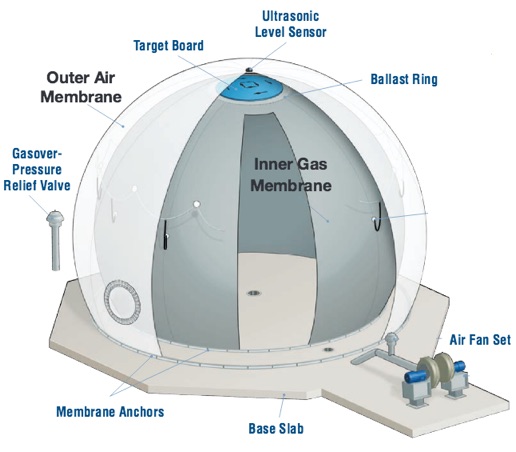
Methane biodigester to process 79 million gallons of
stillage from booming
bourbon industry
December 8, 2015 by Bud Hixson
The Board of Zoning Adjustment methane digester Conditional Use Permit hearing held in the Old Jail building on December 7 produced a lot of information that was new to the public.
In the presentation of attorney Brian Zoeller on behalf of Star Bioenergy, the public learned Heaven Hill Distilleries has an increasingly difficult problem disposing of 79 million gallons of waste stillage per year. Today a lot of it is going down the drain to MSDs Morris Forman wastewater plant. Instead, the distiller wants to pipe the stillage to an anaerobic biodigester and produce methane gas to sell to LG&E. The stillage would be broken down to “a stackable material resembling black compost.”
Proponents describe an odor free and essentially risk free process, that would not have significant impacts on local residents. For their part, the residents in opposition, complained about chronic pulmonary illness, historic brownfields, and the ‘whiskey fungus’ that drapes over houses and cars-calling the proposal an environmental justice issue.
Representative Tom Riner commented that in an era of global war on terrorism, putting methane storage units next to whiskey warehouses, was an invitation to ‘soft target’ terror strikes. Computer images presented by Zoeller depicted a spherical methane storage vessel, something like the one shown at right.
A terrorist attack on the facility seems low on the probability scale, but the consequences could be significant, and the nearest residential property is only 125 feet from the corner of the nearest digester tank. Its a big facility on a small plot of land in an urban setting.
Councilman David James, a former police officer, investigated a methane digester installation facility in Indiana and was staggered by the foul, pervasive odor. Proponents established they intend to process liquid wastes from other sources in addition to handling all the Heaven Hill stillage. Liquid tanker trucks would pull into closed buildings and off-load liquids to be used to balance the digester bacterial action, sustain the process and enhance gas production up to 60% CH4/40% CO2.
Heaven Hill COO Allan Latts, said the distillery is currently producing 1,000 barrels a day and is anticipating producing 1,300 a day to meet demand. Stillage waste will increase with production.
Defects in the Application Process
In a letter posted on the BOZA agenda materials, attorney Zoeller said that on or before May 22, 2015, Planning and Zoning Director Emily Lui informed the applicant that, "Planning and Design Services will treat the facility as a "non-accessory alternative energy system" under Section 4.2.38 of the LDC."
That code rule in the section for conditional uses is now numbered 4.2.37.
https://twitter.com/cctvnews/status/674094668318019584/photo/1?ref_src=twsrc^tfw
China Central News photo
4.2.37 has a critical provision necessary for the applicant-- Non-emergency Generator and Non-accessory Alternative Energy Systems can be located in EZ-1 zoned property as the site is currently zoned. The Metro Planning Director allowed the applicant to avoid more stringent code regulations under Section 4.2.42 -Potentially Hazardous or Nuisance Uses or under 4.2.49 that regulates Solid Waste Management Facilities. The problem for Star BioEnergy and Heaven Hill was that both those uses are only permitted in M-3 zoned properties.
The Solid Waste Management regulation is clearly applicable to the activities proposed for the site. Those rules require BOZA to consider:
A.All of the facilities referenced in this sub-section 4.2.46 (sic) are required to have a license to operate from the Jefferson County Waste Management District (SWR 20.0).
B. A specific written or site plan for vehicle cleaning facilities to prevent the tracking of mud, dirt or other debris onto any public roadway shall be reviewed and approved by the Director of Works before public hearing.
E. In addition to these conditions, the following conditions apply to the respective category.
1. Composting Facilities may be located in R-R, R-1, M-2, and M-3 Districts (but not EZ-1) upon the granting of a Conditional Use Permit when developed in compliance with the following listed requirements:
a. All composting facilities must demonstrate compliance with the applicable state statutes dealing with said facilities (401 KAR Chapters 45 through 49).
b.No composting operation shall occur within 50 feet of any boundary of the site.
g. All composting operations shall be in strict conformity with the regulations of the Louisville and Jefferson County Board of Health; Air Pollution Control District; Kentucky Department for Environmental Protection and the Director of Works. Letters or Certificates of Approval of the plans by the above agencies indicating prior review shall be filed prior to the issuance of any Conditional Use Permit. Uses shall not begin until final approval has been obtained and filed in the Board of Zoning Adjustment docket file.
h.The operation shall be conducted so as not to create a nuisance or cause undue noise, vibration, dust, odor, or light to adjacent properties. The premises shall be kept in a neat and clean condition at all times. No debris shall be stored on the site except on areas where active composting operations are taking place. No fires shall be permitted. Any smoldering flame or spontaneous combustion shall be immediately extinguished.
Similarly, Hazardous and Nuisance uses have a more stringent application review and are restricted to M-3 zoned lands with an approved CUP. Some review requirements include:
B. Environmental and health related concerns raised by the operation and the applicant’s proposal to mitigate any adverse effects to the public’s health, safety and general welfare;
C. The applicant’s site design, buffering, and security measures and their adequacy to mitigate any adverse effects to the public’s health, safety and general welfare;
A Conditional Use Permit under this section shall be issued only if the evidence shows the applicant’s operation and associated nuisances will be properly managed and the public’s health, safety and general welfare will be protected. The Board of Zoning Adjustment may impose additional conditions to protect surrounding properties. All Conditional Use Permits under this section shall be issued subject to the applicant also receiving all necessary permits from local, state and federal regulatory agencies.
Both of these code sections provide more protection and information to the public as the BOZA considers providing a conditional use permit. Here, a very large volume waste handling and compost production facility with considerable odor and explosion hazard was treated as a renewable energy generator. The current code sections don’t properly deal with the impacts of large scale methane digesters. Criticism of the political pressure Mayor Greg Fischer has put on the BOZA/CUP process was direct and blunt from Councilman David James, Councilwoman Woolridge and others:
“Mayor Fischer and his staff have spent many of our tax dollars, in payroll time, to be a champion for this project and this company (operating under former and current names) that we really know nothing about.”
The bourbon industry stores some 5.6 million barrels of aging bourbon in Jefferson and Bullitt county warehouses. The ethanol outgassing is creating ozone pollution with serious public health impacts. Overall, the whisky business creates a lot of problems with air pollution and public health consequences of alcohol addiction. A green strategy would be to propose a method for capturing and reusing the ‘angel’s share‘ ethanol from warehouse outgassing.
If other industrial facilities want to exploit their solid and liquid waste streams to produce methane, the zoning review should not be minimal and abbreviated under Section 4.2.37 as was attempted here. Applicants should locate M-3 property and apply under relevant code sections for solid waste management, composting, fertilizer and risk and nuisance uses. Better code makes better air.
http://www.westech-inc.com/en-usa/products/anaerobic-digestion-biogas-storage-double-membrane-gas-holder-duosphere
“China Seeks to Cap Beijing Population at 23 Million by 2020. Beijing will take aggressive measures to cure the "big city disease", making sure the city's population does not cross 21.8 million by the end of this year, the mayor of the Chinese capital said.” July 2015
waste odor

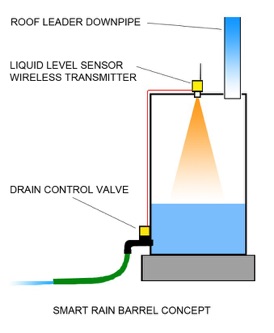
ALTERNATIVES TO SHAWNEE BASIN
MSD’s proposal to build multimillion dollar concrete basins to capture and store wet weather sewer overflows at Grinstead and Lexington Road and at Shawnee Park have alternatives. See full article HERE
The main wet weather deluge into the sewer system comes from rooftops and parking lots in addition to the thousands of acres of paved roadways. See Area Drains HERE
Rainwater should be kept out of the sewers not stored and then expensively treated.
How many millions of gallons of stormwater could we avoid treating in wastewater plants? We don’t know because the gallons drained to the sewer from major parking lots and rooftops that could be captured by an interlinked rainwater storage system have not been modeled.



Left: the big basins require big pipes traveling miles to convey the flow from sewers to storage. MSD is burying the interceptor pipes to the Logan Basin in the concrete channel of the South Fork of Beargrass Creek.